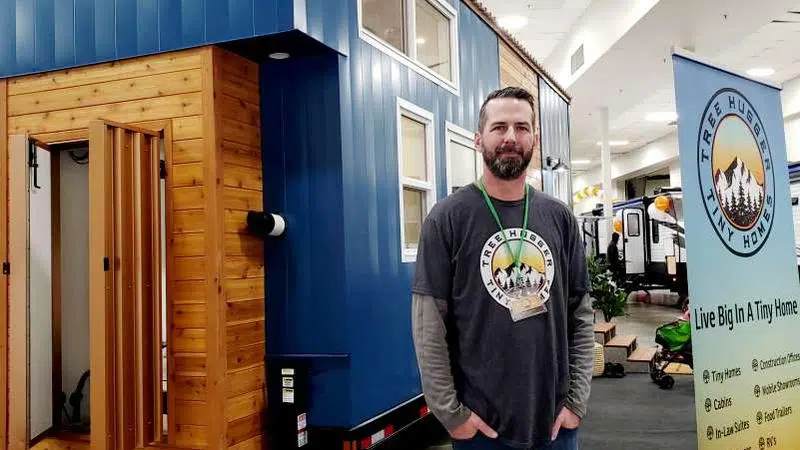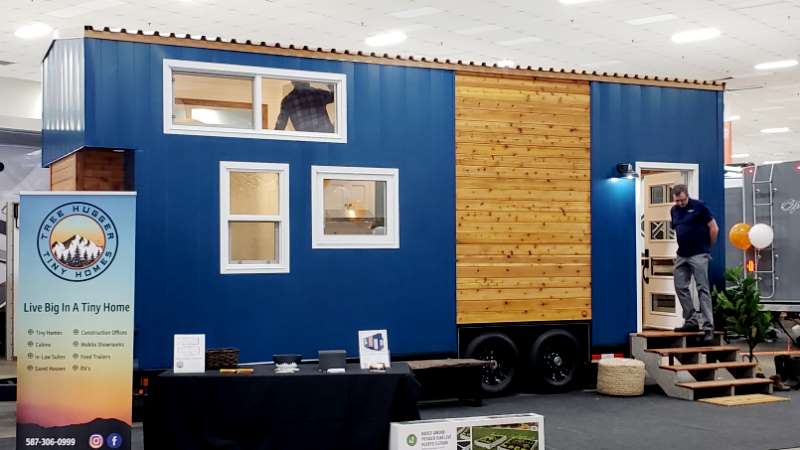
Biggest Red Deer Home Show ever features pint-sized residences
More than 270 businesses took part in this year’s Red Deer Home Show, which organizers say makes it the largest ever.
One unique company at this year’s show was central Alberta-based Tree Hugger Tiny Homes, which recently launched. President Scott Smythe says the industry is going through what could be classified as a “tiny home revolution.”
“Coming out of the residential industry, which was very slow, I wasn’t really happy with the position I was in, so I looked for something else. I could’ve become another of the million builders building spec houses in central Alberta, sitting on them for six to eight months of a year,” Smythe explains. “Then I had an ah-ha moment where wheels all of a sudden opened my market to Canada and northwestern United States.”
Most tiny homes are on wheels, he notes, which allows the home to be moved quite easily.



